Wednesday, April 12th, 2017
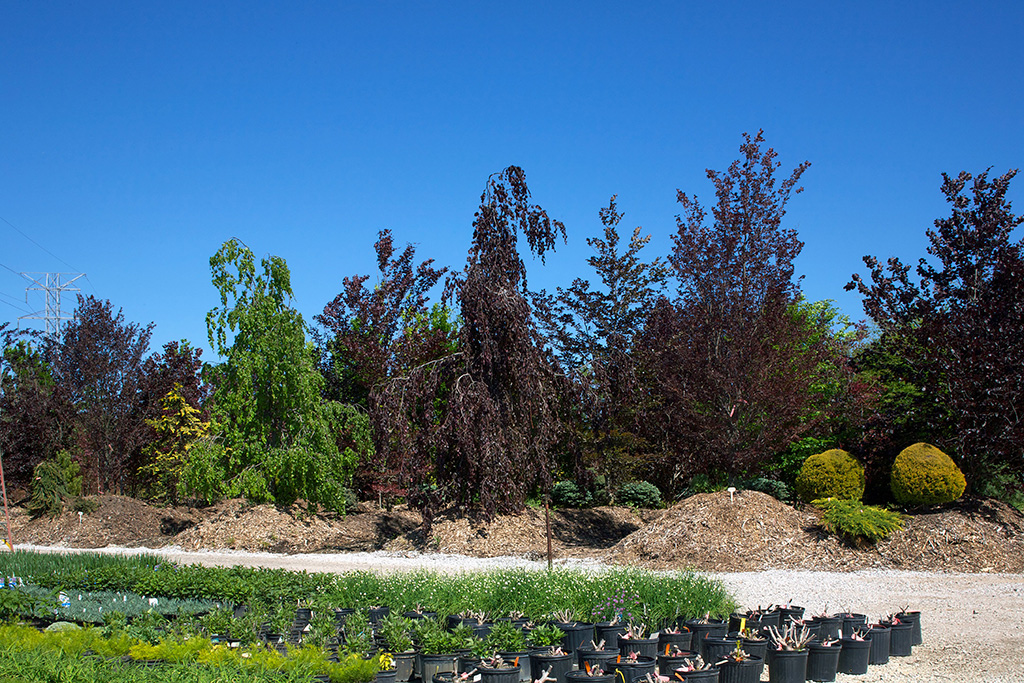
This weekend was not the first evidence of spring but, Wow! What a February. Who would of thought we would be firing up the grill and having a bonfire in February (yeah, I did that). Well, this is NW Indiana and spring surely was not here to stay. Beware of March. We saw everything from an 80 degree day to a blizzard, all of which were hard on not only us, but plants as well.
Monday, August 4th, 2014
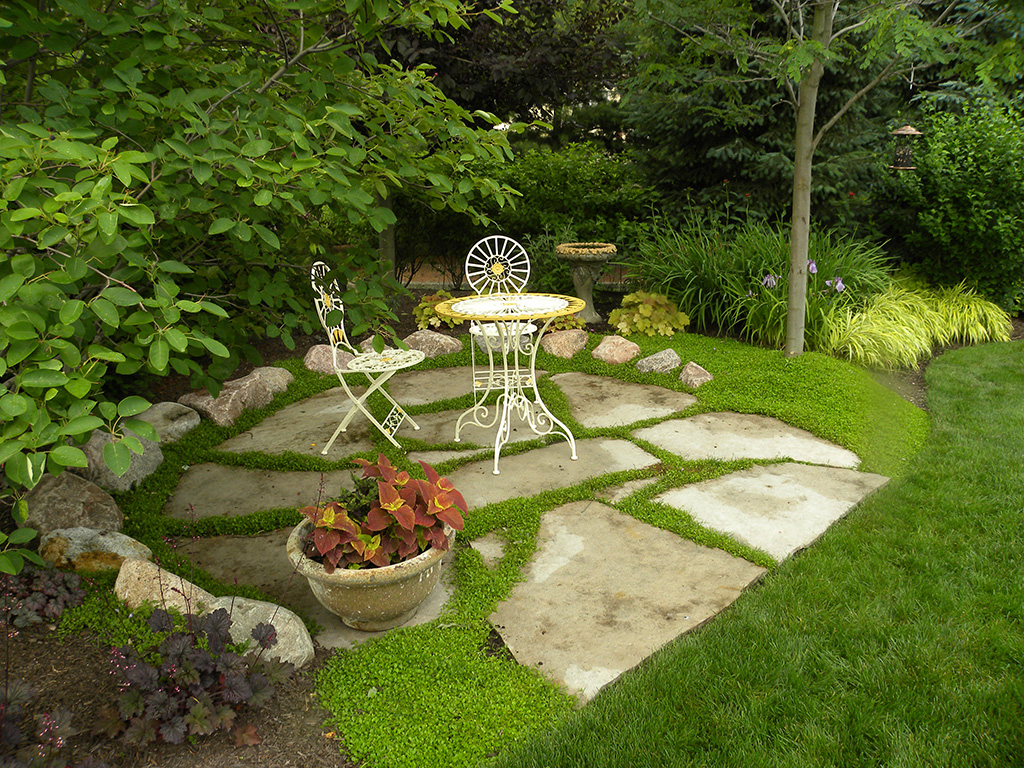
I have a woods behind my home which I love to take walks through. The forest is a stark contrast from my own yard which is full of sun. I love my sunny yard with its colors and sounds, but something happens when you walk in the shade under a canopy of leaves held by the sturdy trunks and branches of Maple and Beech trees. The temperature drops and a sheltered stillness enters your heart as you feel the protection of nature. When the sun peeks through the foliage nature’s shade garden becomes vibrant with moss on fallen trees, ferns, and in spring Trillium, Blood Root, Jack in the Pulpits, and May Apples cover the forest floor.
Tuesday, June 11th, 2013
Fire PitGround CoverHardscapesLandscapingTrees
This month we have a new case study for our readers. Many people want to know what Nancy’s house looks likes. Well, here it is. This property won the 2012 Indiana Nursery and Landscape Association’s Award of Excellence in Residential Landscape Design/Build category.
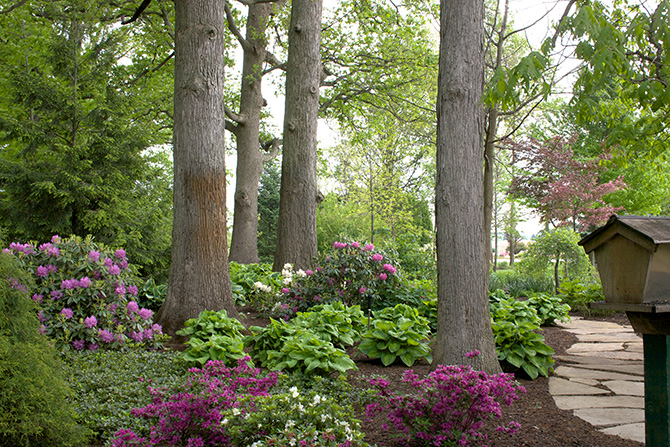
Where do we begin with this one? From the day ground was broken for the house over Twelve years ago this property was designed to be a landscaping marvel. The house is situated among hundred year old oak trees. During construction Nancy & Roger were adamant about large equipment encroaching upon the roots of the trees. The construction site was cordoned off to within 15′ of the house. This insured that there would be no construction equipment/traffic over the roots of the existing old growing trees. All but one survives to this day. In the shade of the large old growth trees live dozens of Hosta varieties. There are multiple flagstone paths leading from garden to garden as well as strips of green grass that form their own pathways around the acres of gardens. Nancy & Roger are both very passionate about plants and either one of them could discuss for hours the various intricacies from species to species and subspecies to subspecies.
Wednesday, May 1st, 2013
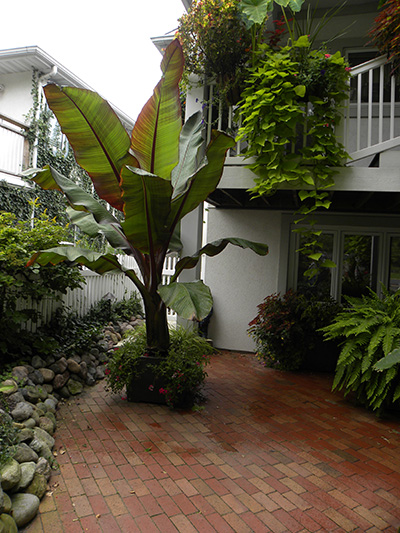 As I sit here and write this it is February. It is cold, grey, and dirty outside and the winter seems utterly endless. Yes, I know you are reading this in May and those freezing, rotten days seem like they were a lifetime ago. You see, February is usually when I head down to the tropics, but this year I did not go. Woe is me. Instead, I am getting my tropic fix sitting at my desk looking through supply lists from our producers. I am bringing the tropics here in the form of palm trees. We brought in 8 different varieties that are up to 8 feet tall. One of them is ‘Bismark Silver Palm’ which reminds me of Jurassic Park and dinosaurs. This variety as well as another, ‘King Sago’, has been around for the past 200 million years. What a history?!
As I sit here and write this it is February. It is cold, grey, and dirty outside and the winter seems utterly endless. Yes, I know you are reading this in May and those freezing, rotten days seem like they were a lifetime ago. You see, February is usually when I head down to the tropics, but this year I did not go. Woe is me. Instead, I am getting my tropic fix sitting at my desk looking through supply lists from our producers. I am bringing the tropics here in the form of palm trees. We brought in 8 different varieties that are up to 8 feet tall. One of them is ‘Bismark Silver Palm’ which reminds me of Jurassic Park and dinosaurs. This variety as well as another, ‘King Sago’, has been around for the past 200 million years. What a history?!
In addition to the palm trees, we have ‘Siam Ruby’ banana trees, ‘Birds of Paradise’, Mandevilla Vines which are 5 feet tall in a teepee form, ground orchids, and that is just the tip of the iceberg (winter joke). Using combinations of these plants in containers and planted in beds will give a look that I would have loved to see this winter. Since a little tropical vacation was not in the cards this year then I have brought the tropics to Indiana. Now, what did I do with my margarita and by golly turn up the Jimmy Buffett!
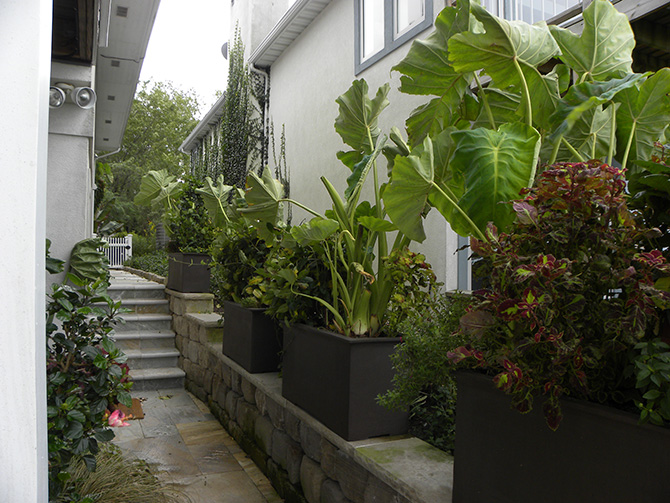
Monday, March 4th, 2013
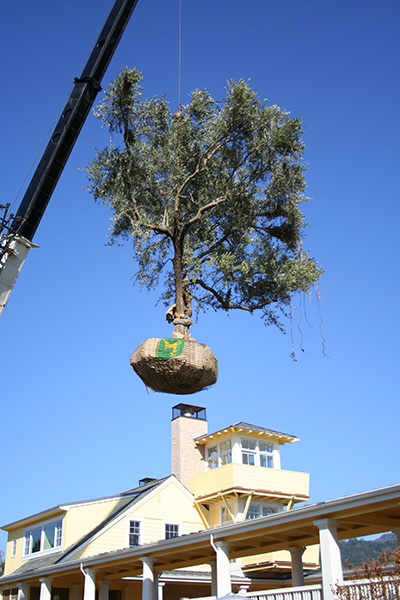
Benessere Vineyard, Napa Valley CA
Being located in Valparaiso we are less than thirty miles from both Illinois and Michigan. We commonly work out of state and have completed projects in California, Colorado, Tennessee, and, of course, Indiana, Illinois, and Michigan. When we do these out of state projects there are a lot more variables to consider. For example, we often have to find raw materials in other state simply because of variations in trucking laws. Thankfully we deal with these issues regularly so it is a matter of organization and orchestration.
While working in nearby states we can just use our crews, tools, plants, and materials. When we work on projects across the country we sometimes need to hire labor, rent tools and machinery, and find plants and materials. In Colorado, we brought two crews out to do the job and rented the machinery. In California we found everything there and completed the job by locating and selecting plants and stone materials from various wholesalers and using a local landscaper and excavator to install everything with Nancy’s direction on site. When we are only designing we can just do the work on site using pencils and paper then convert it to digital back at the hotel.
Wednesday, October 10th, 2012
Confers (aka evergreens) are the ultimate four-season plant and the backbone of gardens. From cute, miniature pines to stately spruces, conifers come in all shapes, sizes, colors, and textures. Conifers are easy to grow if you choose the right plant for the right spot. The first thing to consider is size. You need to pick a conifer that will highlight the scale of your garden. A large conifer will quickly overwhelm a small garden, while a dwarf will be lost in a large space. The growing habit of a particular variety is very important. Some conifers grow glacially slow while others grow several inches to over a foot a year.
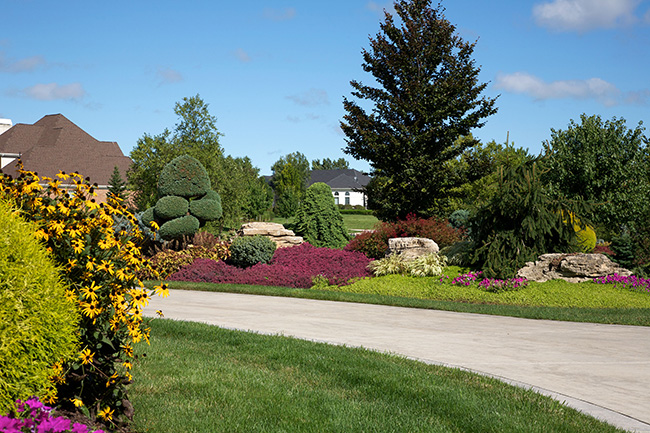
A specimen conifer will anchor a bed in winter and serve as a perfect backdrop to perennials in summer. We are always looking through our vast collection of rare and unusual specimens to choose exactly the right plant for a design. Even for us professionals find it challenging to identify a perfect fit, but the hunt is half the fun.
Monday, August 13th, 2012
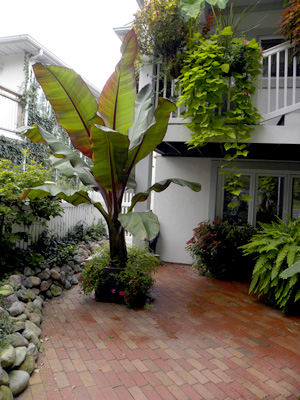 When was the last time you had your feet in the sand on a tropical beach? Remember the salty sweet ocean air, the warm breeze, and, of course, the palm trees. Those memories don’t have to be limited to spring break and family vacations. You can bring that peaceful, tropical feeling to your own home and garden even here in the Midwest.
When was the last time you had your feet in the sand on a tropical beach? Remember the salty sweet ocean air, the warm breeze, and, of course, the palm trees. Those memories don’t have to be limited to spring break and family vacations. You can bring that peaceful, tropical feeling to your own home and garden even here in the Midwest.
Elephant ears can help achieve that feeling in many forms. Colocasia (Taro Plant) is one of the oldest cultivated plants in the world, grown for more than 10,000 years. While we use them as a tropical accent in landscaping, they are most commonly grown as food. These plants produce long-stalked, heart shaped clumps that can tower up to 7 feet. They come in varied shades of green and even black leaves. They can be added to a landscape as a contrast or a centerpiece in a container.
Boasting many showy flowers, Mandevilla vines can climb over 20 feet and are great in containers and hanging baskets. Tropical hibiscus, with their extremely large blooms, give the appearance of a tropical island and they come in many colors. Of course, no tropical look would be complete without palm trees and banana trees. They affect more than the sense of sight. Their fronds rustling in the summer breeze can take you far from home in an instant.
The tropics are closer than you think. Just walk outside!
Thursday, May 17th, 2012
FlowersHardscapesLandscapingTrees
Have you ever slowed down to drive by a beautiful home or landscaping? Do people do the drive-by in front of your house or do they go by so fast you don’t know if they were driving a Ford or Ferrari? Your driveway entrance is an invitation to your guests to enter your space.
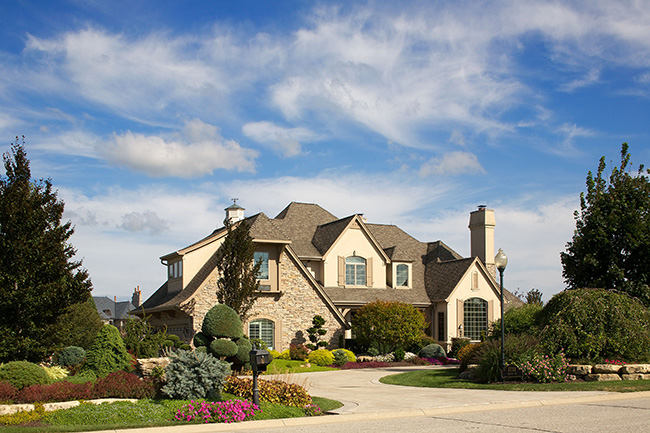
A driveway entrance is often one of those areas in our yard that get neglected. We see a few straggled survivors or leftover plants by the road. Sometimes the beds are neglected and overgrown. No matter the shape or size, a well-planned and planted driveway entrance creates a visual journey with promises of what awaits your guests upon their arrival.
What does your driveway entrance say to passersby? What does it say about you? Is it drive-by worthy or just another unremarkable blip along the road. Do drivers want to slow down just to imagine what they might find if they turned in and ventured to see you?
Thursday, April 5th, 2012
HardscapesLandscapingMaplesTrees
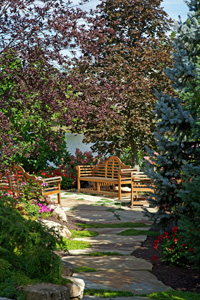 The challenges of this project were grading from front to back without any steps and a need for shade and enclosure. This particular project was developed over a period of one year. A huge commitment for a landscaper and client, but having designed other areas of this property over several previous years we had developed a wonderful working relationship with the client.
The challenges of this project were grading from front to back without any steps and a need for shade and enclosure. This particular project was developed over a period of one year. A huge commitment for a landscaper and client, but having designed other areas of this property over several previous years we had developed a wonderful working relationship with the client.
Weathered boulders and outcropping were incorporated into the landscaping to create raised planting beds. Mature conifers and specimen trees were installed for privacy and to enclose the yard. A Select flagstone path from the front yard down a gentle slope was installed with a teak bench seating area incorporated midway for the client to rest on and enjoy the view on their way to the lower patio.
Thursday, April 5th, 2012
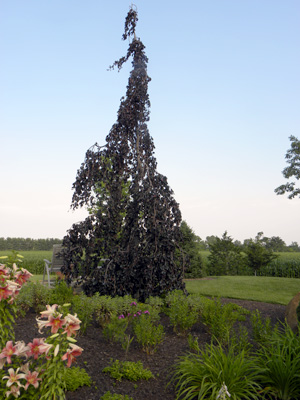 The time to plant a tree was twenty years ago. I remember years ago when I was young (Okay so it was a LONG time ago) an older couple came in to buy a tree. When my dad, Walter Small, told them how much the tree they wanted would cost in the size they wanted the wife began to cry. They both said they wish they had planted their tree twenty years before and they would have had a big beautiful tree that day.
The time to plant a tree was twenty years ago. I remember years ago when I was young (Okay so it was a LONG time ago) an older couple came in to buy a tree. When my dad, Walter Small, told them how much the tree they wanted would cost in the size they wanted the wife began to cry. They both said they wish they had planted their tree twenty years before and they would have had a big beautiful tree that day.
As designers and landscapers we are always looking for new and interesting trees to supplement our native variety. We have an extensive collection of one-of-a-kind examples as well as more ordinary varieties all specifically chosen to highlight any location. One of the best parts about our profession is that we get to see unusual specimens almost every day. We have a passion for nature’s innate beauty and a respect for man’s desire to expand the palate available for us all to enjoy.
We are fortunate in this part of the country to boast many native forests and trees including Maples, Oaks, and Sassafras just to name a few. Who hasn’t stopped in wonder at the awesome fall displays of these beauties or enjoyed the cooling shade under their branches in summer. Trees reduce the effects of the climate in our yards, support wildlife, and, of course, look good doing it. When we plant trees we are giving our land a sense of permanence. To plant a tree is to hope for a future beyond our own time.